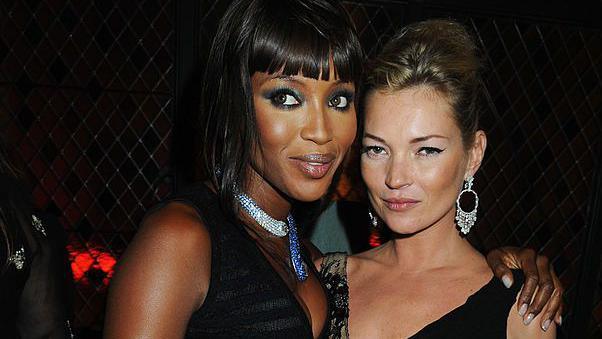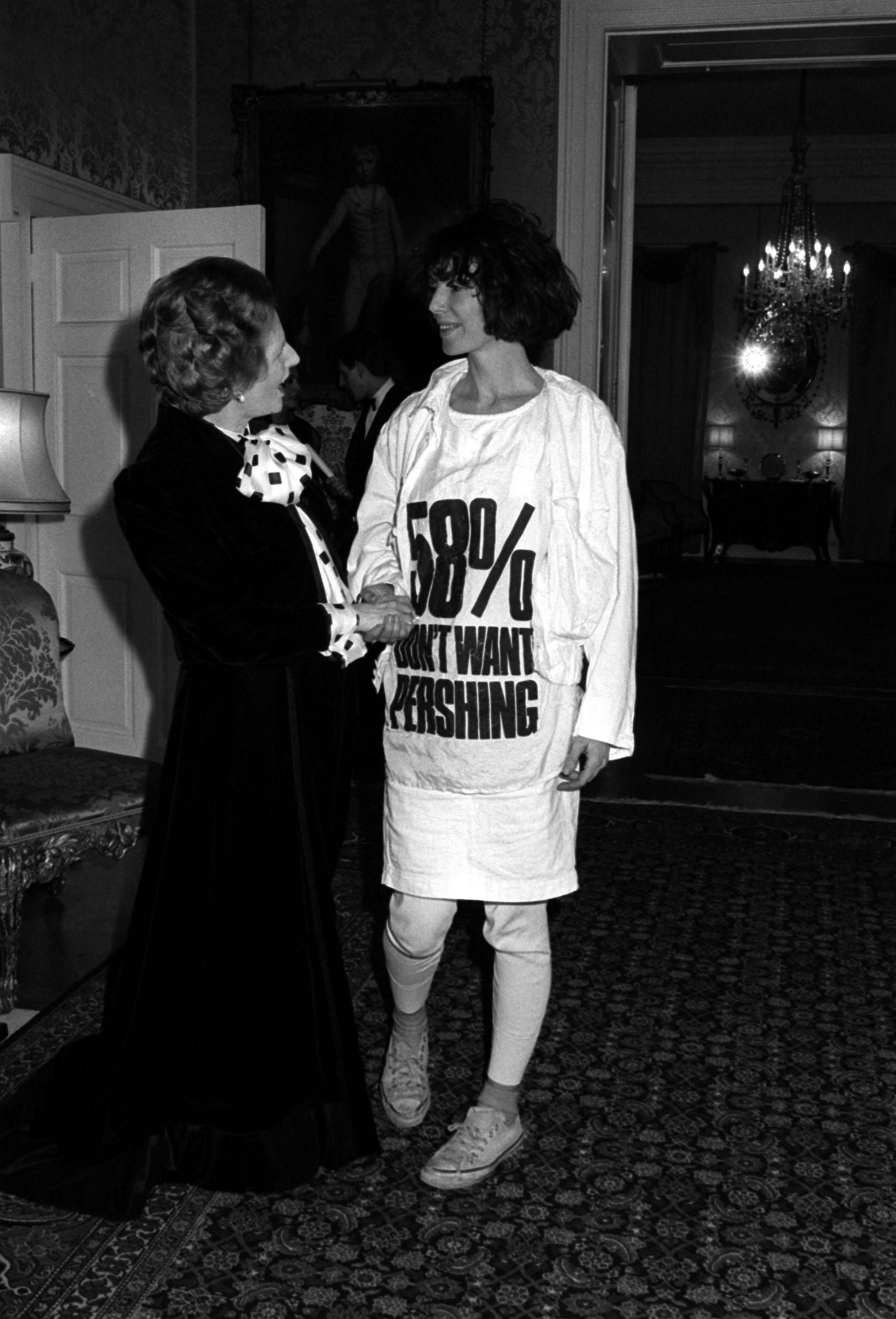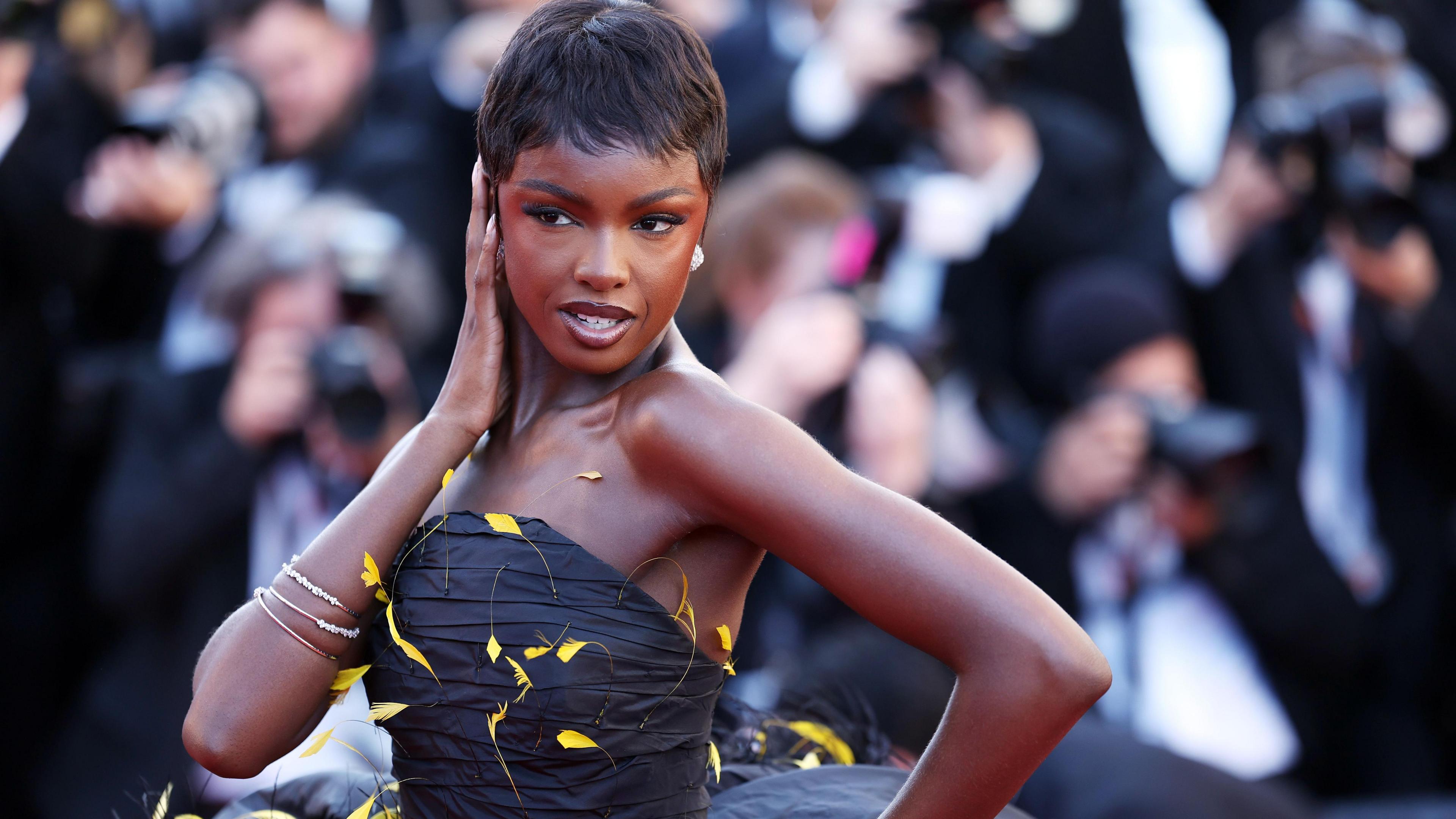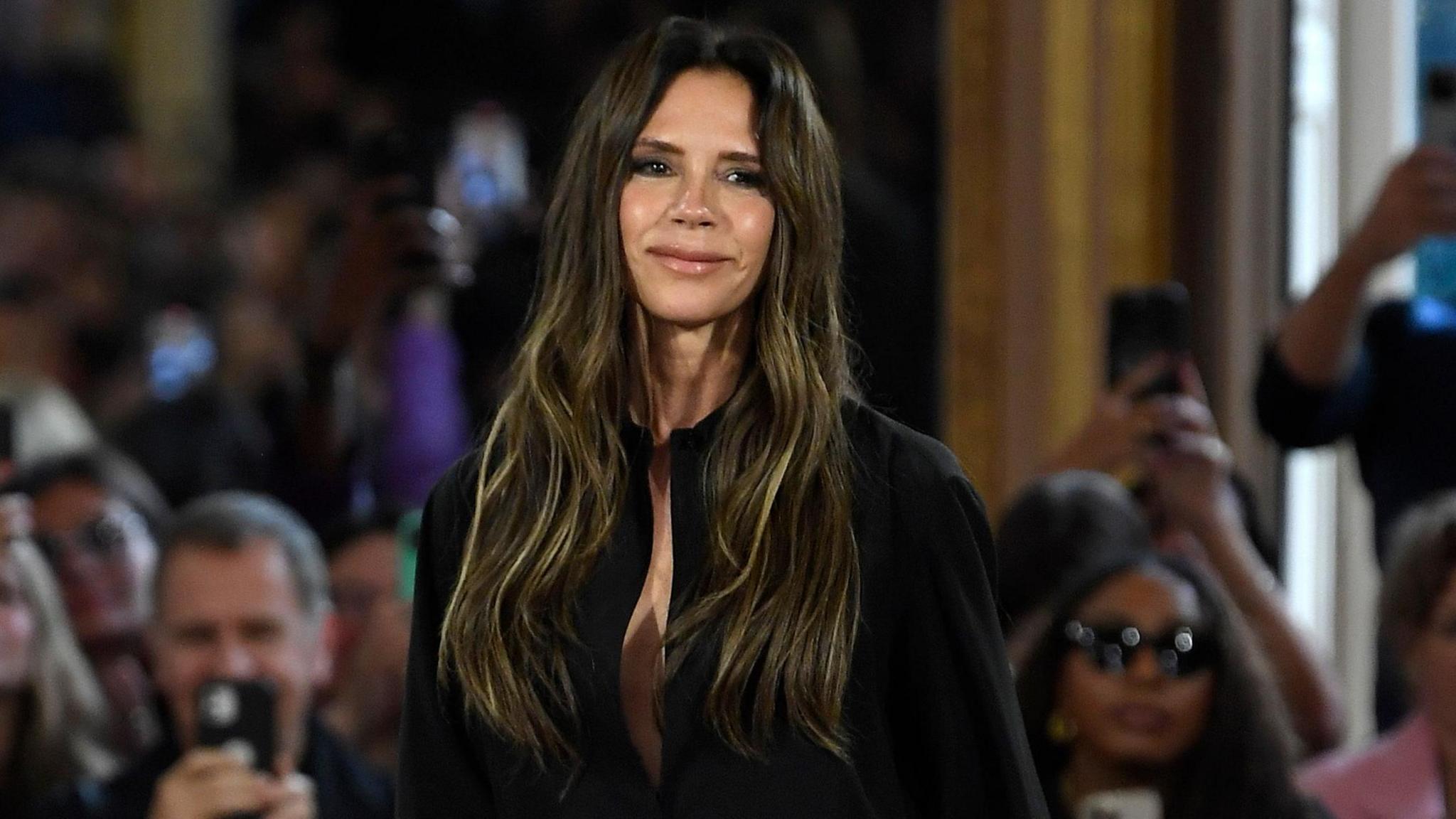London Fashion Week is 40 - but can it stay relevant?

Modelling stars Naomi Campbell and Kate Moss started their early careers at London Fashion Week
- Published
London Fashion Week is back, and is celebrating 40 years in the industry by doing what it does best - showcasing what's hot on the catwalk, with more than 250 designers.
Currently part of the Big Four fashion weeks alongside New York, Milan and Paris, LFW is now recognised globally.
Lynne Franks, who had her own PR agency, was keen to showcase the capital's fashion talent, including her clients.
"It was very clear we were not taken seriously by international press and retailers [at the time]," Franks told the BBC.
She added that she was instrumental in setting up London Fashion Week, external, along with her colleague, Annette Worsley-Taylor, who ran the London Designers Collection.
But funding was a big challenge.
They managed to secure some from the British Fashion Council.
Franks also asked one her PR clients, Mohan Mujarni, who launched fashion brand Tommy Hilfiger for some money.
He agreed, and Franks said that "this made it the first time London ever had a central venue".
She wanted to find somewhere she could launch the young designers and models she wanted to promote.
One venue that caught her eye was the lawn outside the Commonwealth Institute, which is now known as the Design Museum in the capital's Holland Park.
The lawn was big enough to pitch a tent, so that is where the first fashion show for LFW was held - under canvas - like some of the fashion shows in Paris and Milan.

Prime Minister Margaret Thatcher greeted fashion designer Katharine Hamnett in Downing Street in 1984 at an LFW event, with Hamnett in a nuclear protest T-shirt
But after three seasons there they had to relocate due to the tent sinking into the lawn, according to a recent interview she did with Vogue, external.
So LFW moved to Duke of York’s Barracks in Sloane Square, which is now known as Saatchi Gallery.
By 1986 the bigger and better venue meant there was more space for creativity, but it also needed more funding, which Franks again secured from her clients.
“We had a much bigger tent down there, spaces in the complex, press office, double catwalks…it was wonderful”, Franks told the BBC.
As it grew in popularity, London Fashion Week also began to attract huge names including Diana, Princess of Wales, Boy George and Madonna.
LFW also relocated again, to the neighbouring trade exhibition at Olympia, which had a large designer showroom space which could accommodate everyone involved.
Between 1988 and 1989, Britain’s fashion stars Naomi Campbell and Kate Moss made their runway debuts at LFW, before going on to become the hugely famous names they are today.
The recession in the early 90s resulted in reduced funding, but by 1993 the British Fashion Council had set up the NewGen scheme to mentor and financially boost young designers. One of the first recipients was rising star Alexander McQueen.
'Designers' resilience'
US Vogue critic and ambassador for BFC’s emerging talent, Sarah Mower, said that what distinguishes LFW is its young talent.
“London produces young, individualist designers from all over the UK and who belong to multiple cultures...
"London supports and seeks out emerging talent like no other city.”
She added that UK designers are resourceful during tough times, when they do their best to stay buoyant.
"Generations of London designers have acted resilently against every downturn," she said.
"In the darkest times they’ve been spurred by their can-do resourcefulness and drive to say something, with gangs of likeminded friends from many communities."
A sustainable future
Forty years after its launch, the purpose of Fashion Weeks globally is still to showcase what is new - whether that's colours, clothing styles or even fabrics.
So for London Fashion Week to open this year with pre-loved clothes on the catwalk, external sends a strong message about sustainability in the industry.
Being more environmentally friendly is one of several ways London Fashion Week is trying to stay relevant in an age of increased competition for attention and evolving consumer habits.
Working with the British Fashion Council, eBay's team put together a show of archive pieces that dominated conversation in previous fashion weeks.
The online marketplace then put the items for sale on their website after the show on Thursday evening.

Model Leomie Anderson, pictured in May, supports vintage clothes being showcased at Fashion Week
Model Leomie Anderson, who co-hosted the show, told the BBC that making fashion kinder to the environment is one her priorities and is why she got involved in the show.
"I feel like people's perception of pre-loved fashion should be if an item looks good, I'm going to get it.
"We see how the quality of fast fashion is completely different to vintage pieces, so even if something is pre-owned, chances are the quality of it is going to be much better anyway," she added.
Anderson, who said her favourite pieces from the show were from Vivienne Westwood and Stella McCartney, says vintage clothes definitely have a place at fashion weeks.
"Society can be very trends driven, so people feel the need to buy new things all the time when in reality trends often repeat themselves," Anderson said.
"So you can find something that is still current but already exists - I want people to wrap their heads around that second hand doesn't mean out of style."
The eBay show was in addition to the returning Oxfam Style for Change catwalk and comes at a time when fast fashion is as popular as ever in Britain.
A recent report found we consume more clothing, external than any other country in Europe, with each individual throwing away around 35 items per year into general waste, rather than selling or donating to charity.
"Vintage clothes aren't just better for the environment, but you can actually find pieces that are unique to you and your own personal style", Anderson said.
Global appeal
As London Fashion Week marks its 40th birthday, there are also questions over whether it still has the global appeal of years gone by.
British designers are choosing to showcase their collections elsewhere, such as Paris and New York, with Milan also gaining more prominence in recent years.
Victoria Beckham, who was previously a fixture in London Fashion Week's calendar, made the decision to exhibit in Paris for the first time in 2022 and has stayed there ever since.

Victoria Beckham now showcases her collections at Paris Fashion Week
Many British menswear designers have also chosen to leave London, including Craig Green, Bianca Saunders and Grace Wales Bonner.
Green has gone to Paris, whilst Saunders and Wales Bonner have moved their shows to Milan, which is attracting creatives from all over the globe.
One of the reasons is its tax incentives for remote workers and a recent digital nomad visa, which allows non-EU nationals to relocate to Italy if they earn over a certain amount.
It isn't all one-way traffic though - global big hitters such as Burberry, Erdem and JW Anderson have locked down London as the destination to debut their Spring Summer 2025 collections.
There's also a London debut for theatrical indie brand Puppets & Puppets, which has spent the last five years lighting up New York runways.
Its designer, Carly Mark, says she has chosen London as the new base for her company.
Whilst some established British designers may be looking elsewhere, London Fashion Week still remains key for launching careers.
The British Fashion Council's NewGen scheme still offers opportunities to up and coming designers, with a brand new showcasing space brought in for this fashion week.